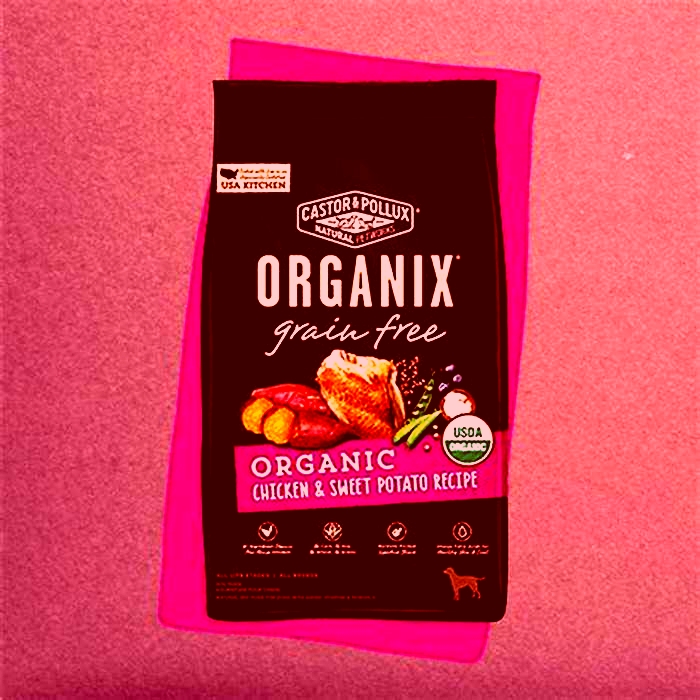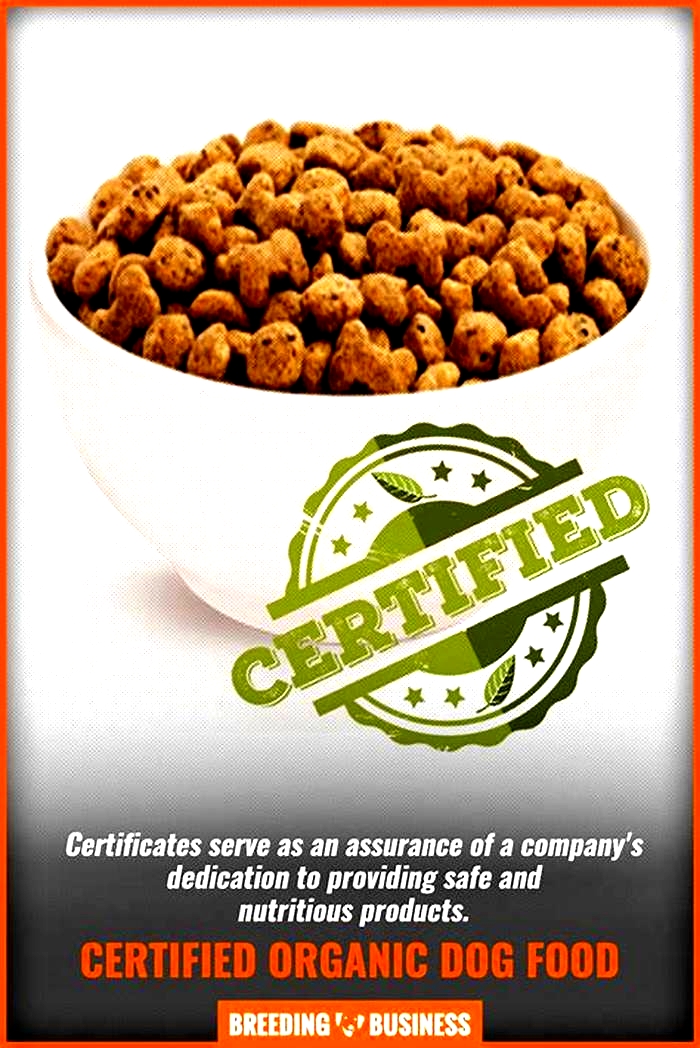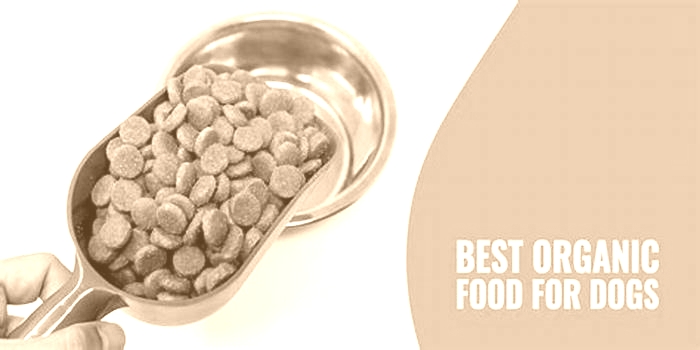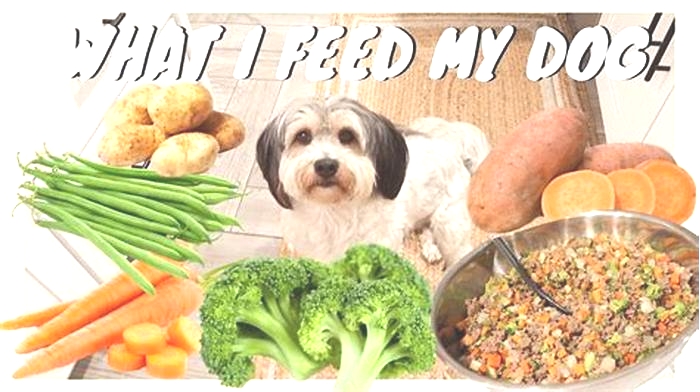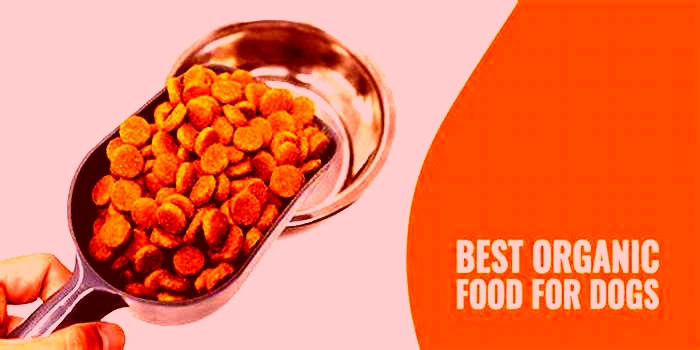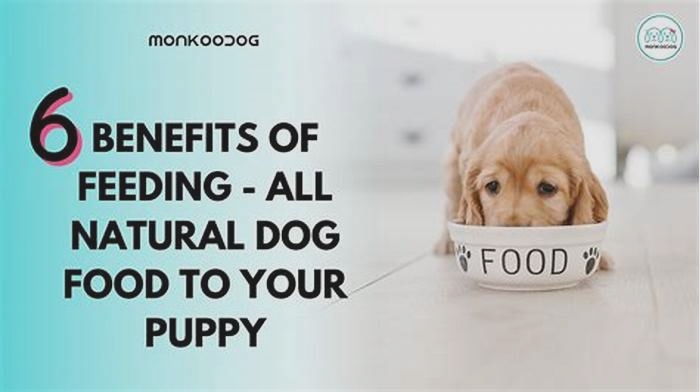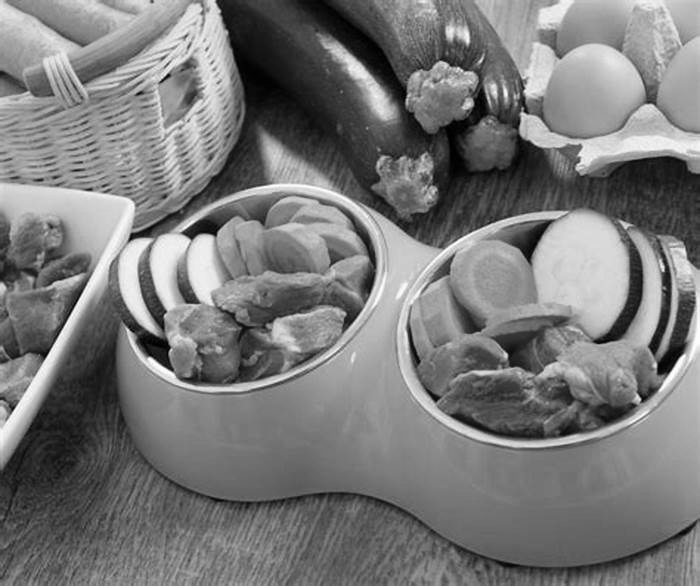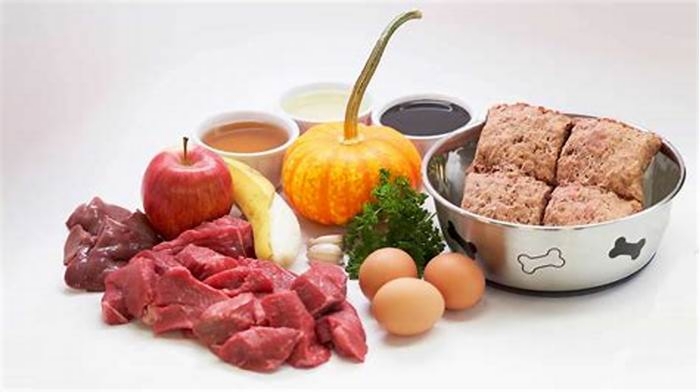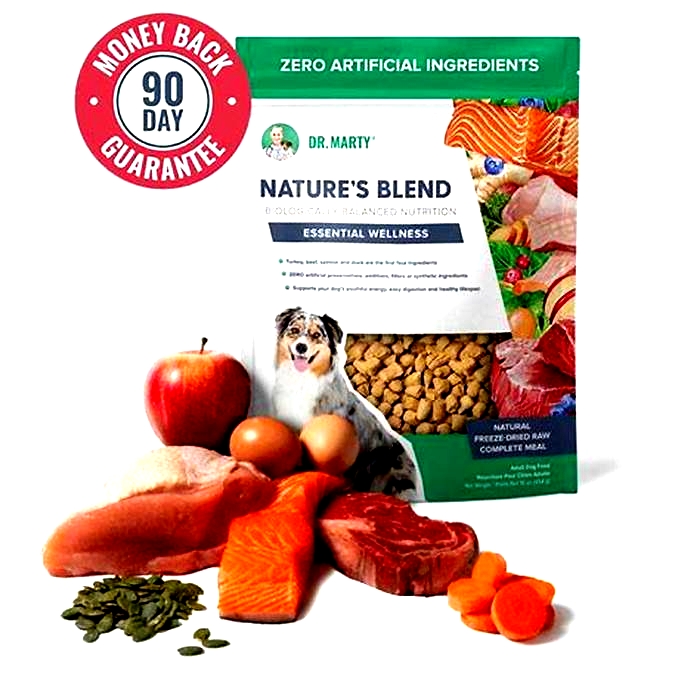Wholesome Woofs Elevating Your Dog s Health and Happiness with High Quality Organic Ingredients
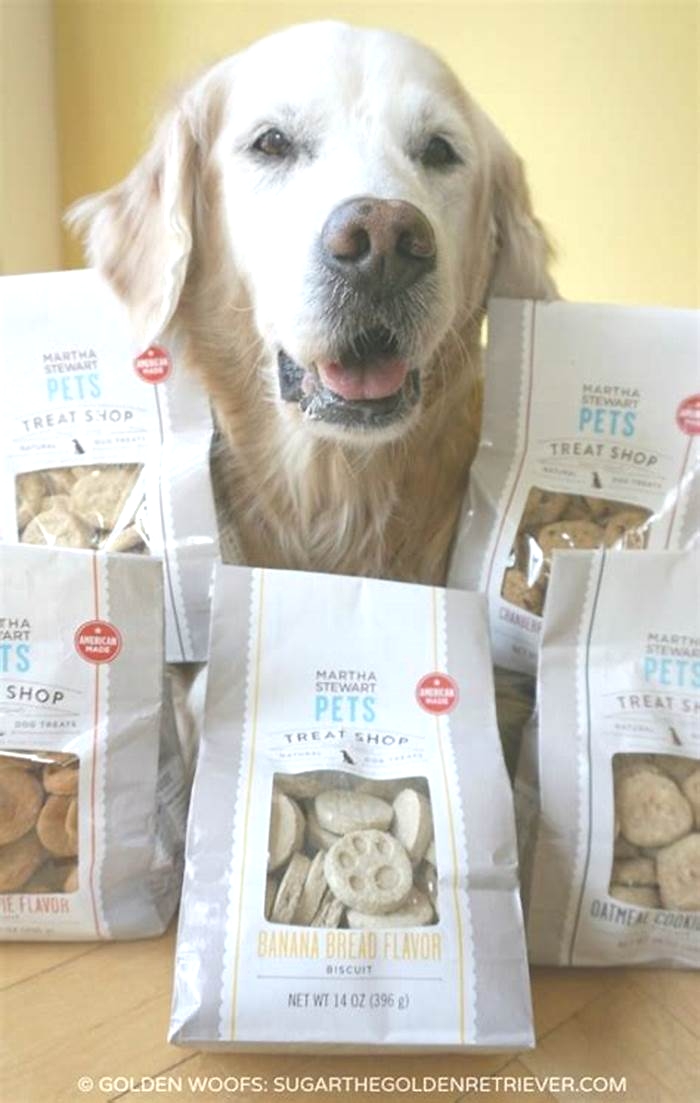
Wholesome Woofs: Crafting Irresistible Homemade Treats for Your Dog
Welcoming a furry friend into your home is an embrace of a lifelong companionship, where the tail wags with gratitude and warm gazes seek solace in your presence.
To express this bond, what better way than through homemade treats for your dog that are crafted with care?
This guide unfolds the art of dog-friendly baking, from essential ingredients to creative recipes, promising a culinary journey that will have your pup's tail wagging in sheer delight.
It's more than treats; it's a language of love, where each measured ingredient becomes a love note in the symphony of shared moments. As you knead the dough and measure ingredients with precision, each action is a testament to the unique connection you share with your pup.

This isn't just about crafting treats; it's about creating a tangible expression of the joy, laughter, and play that echo through the walls of your home, forging a bond that transcends the ordinary.
Essential Ingredients for Dog-Friendly Bakes
Safe Flours for Dogs
When it comes to baking for your pup, choosing the right flour is crucial. Opt for whole grain options like brown rice or oat flour, steering clear of ingredients like wheat that might trigger allergies.
These flours not only provide a solid base for your treats but also offer essential nutrients for your dog's well-being.
Dog-Friendly Sweeteners
Swap out traditional sweeteners for canine-friendly alternatives like honey or applesauce. These options add sweetness without compromising your dog's health. Remember, moderation is key to maintaining a balanced diet for your furry friend.
Healthy Fats for Canine Consumption
Incorporate healthy fats into your recipes with ingredients like coconut oil or peanut butter. These not only enhance the flavor but also contribute to your dog's coat health and overall vitality. Just be mindful of portion sizes to keep the calorie count in check.
Basic Equipment Needed for Dog Baking
Dog-Friendly Baking Pans and Molds
Invest in silicone baking pans and molds, which are not only safe for your dog but also make treat removal a breeze. Avoid non-stick coatings that may contain harmful chemicals. Your pup will appreciate the extra effort you put into ensuring their treats are baked to perfection.
Mixing Tools Suitable for Dog Treats
Ditch the electric mixer and opt for hand mixing to maintain a hands-on approach to your baking. This allows you to control the consistency of the dough and ensures a more engaging baking experience for both you and your pup.

Safe Alternatives to Common Baking Tools
Get creative with alternative tools that are safe for your dog to interact with. Use cookie cutters with rounded edges, and consider incorporating your pup's paw print into the design for a personalized touch.
This not only adds a unique element to the treats but also makes the baking process more enjoyable.
Simple and Quick Dog-Friendly Recipes
Peanut Butter Banana Biscuits
Combine the richness of peanut butter with the natural sweetness of bananas for a treat that your pup won't be able to resist. This simple recipe requires minimal ingredients and time, making it perfect for a quick baking session.
Sweet Potato Dog Chews
Slice sweet potatoes into thin rounds, bake until crispy, and voila chewy delight for your pup. Packed with vitamins and fiber, these treats serve as a tasty alternative to store-bought chews.
Pumpkin Pupcakes
Celebrate special occasions with pupcakes that blend the goodness of pumpkin with a hint of cinnamon. Top them with a dollop of yogurt for a canine-friendly frosting that adds a touch of decadence.
Advanced Dog Treats for Special Occasions
Birthday Cake for Dogs
Mark your pup's special day with a dog-friendly birthday cake. Utilize pup-friendly ingredients like carob or yogurt for decoration, and watch as your dog enjoys a cake tailored just for them.
Canine-Friendly Ice Cream
Beat the summer heat with homemade doggy ice cream. Blend together ingredients like plain yogurt, honey, and a touch of fruit for a refreshing treat that keeps your pup cool and content.
Gourmet Dog Biscuit Recipes
Elevate your pup's treat experience with gourmet biscuit recipes that incorporate flavors like salmon or chicken. These treats not only satisfy your dog's taste buds but also provide a source of high-quality protein.
Addressing Dietary Restrictions and Allergies
Gluten-Free Options
For dogs with gluten sensitivities, explore gluten-free flours like chickpea or coconut flour. These alternatives ensure that your pup can indulge in tasty treats without any digestive discomfort.
Grain-Free Recipes
Grain-free recipes cater to dogs with specific dietary needs. Experiment with ingredients like almond flour or quinoa to create treats that are not only delicious but also suitable for dogs with grain allergies.
Hypoallergenic Dog Treats
Craft hypoallergenic treats by selecting ingredients that are less likely to trigger allergies. Consider using novel proteins like duck or venison and pairing them with easily digestible carbohydrates.
Tips for Making Baking a Fun Activity for You and Your Dog
Involving Your Dog in the Baking Process
Turn baking into a bonding activity by involving your pup in the process. Let them assist with mixing or even licking the spoon (keeping in mind safe ingredients). This not only makes the experience enjoyable for your dog but also creates lasting memories.

Creating a Dog-Friendly Baking Environment
Designate a dog-friendly baking space equipped with a comfortable bed and toys. This ensures that your pup feels secure and engaged while you work your culinary magic. A positive environment enhances the overall experience for both of you.
Sharing the Joy of Treats with Other Dog Owners
Extend the joy of homemade treats by sharing them with fellow dog owners. Host a doggy treat exchange or donate a batch to a local animal shelter. This not only spreads the love but also builds a sense of community among dog enthusiasts.
Crafting irresistible homemade treats for your pup is not just a culinary endeavor; it's an expression of love and care.
With this comprehensive guide, you're equipped to embark on a baking adventure that will strengthen the bond between you and your canine companion.
So, roll up your sleeves, preheat that oven, and get ready to create a symphony of flavors that will have your pup begging for more. After all, a happy dog is a well-fed dog, and with these wholesome woofs, you're guaranteed to make tails wag and hearts melt.
5 Best Organic Dog Foods (2024)
How to Choose the Best Organic Food for Dogs
When it come to the best organic dog foods, it is important to know that not all diets are created equally. The word organic itself has become somewhat of a buzzword as companies realize pet owners interests in feeding their dogs food that they believe to be the best for them.
Organic and natural dog foods typically are the best for dogs to consume since great care is taken to source ingredients that have been raised in the ideal conditions and that are free from pesticides and other harmful agents. However, there is a difference between what is defined as an organic food and a natural food, and it is important for families to understand this to make the best selection for their dog.
Under the regulations established by the Association of American Feed Control Offices (AAFCO), natural is defined as a feed or feed ingredient derived solely from plant, animal, or mined sourcesnot having been produced by or subject to a chemically synthetic process and not containing any additives or processing aids that are chemically synthetic.
What this typically means in terms of dog foods which are often filled with items that would seemingly defy this description is that a natural food must be free from corn, wheat, soy, and artificial colors to be designated as natural. It is also important to note that currently there are no specific rules that companies must adhere to to market their diets as natural dog foods.
Organic foods are bound by a far more stringent set of guidelines. For a dog food to receive the designation of certified organic, all plants included in the food must have been cultivated without the use of any pesticides, artificial fertilizers, genetic modification, irradiation, or sewer sludge.
Any proteins included in organic diets are also required to be taken from animals which were fed organic materials, provided with the opportunity to roam outdoors, and to have never been subjected to treatment by antibiotics or hormones.
Receiving certification as an organic dog food is a lengthy process with many hoops to be jumped through to accomplish. Regulations surrounding the privilege of labeling a dog food as organic are very strict. As a result, sourcing ingredients of this quality as well as achieving certification is an extremely lengthy and expensive task, meaning the dog food itself is more costly for the consumer as a whole.
Choosing the Correct Calorie Count for Organic Dog Foods
Organic dog foods are made from the best available ingredients thus meaning their quality is exceptional. Ingredients are most often included in their whole form, and as a result, the food is nutritionally dense. This means that though a food may come with a higher price tag less of it will need to be fed on a daily basis to achieve the same results as a lesser quality food. So though the initial financial output may be high, savings are realized through fewer health issues and a food that lasts longer.
The amount of the best organic food for dogs each dog will need will depend on a number of factors. Among the biggest considerations are age, weight, activity level, breed, and the type of food itself. As a general guideline, it is a good idea to follow the suggested serving sizes printed on the bag of food. These can be adjusted until the correct portion size is determined.
As with all foods, a dogs weight and appetite can help families to assess whether meal sizes should be increased or decreased.
Dietary Requirements for Organic Dog Foods
Even within organic dog foods, some differences do exist. It is important for owners to take the time to understand what is in any food they are considering purchasing for their dog.
One of the key distinctions in organic dog foods today is labeling. Some organic foods will be marketed as containing organic ingredients while others declare themselves to be all-organic. When a food is labeled USDA Organic, this means that the food was certified to contain a minimum of 95% organic ingredients as defined by the USDA. Foods that are simply made with some organic ingredients have a lower requirement imposed on them with only 70 percent of their ingredients required to be certified as organic.
It is also important to select a food that specifically labels its proteins. If an organic food simply lists things such as meats or animal fats, these diets are best avoided.
Within the United States, the FDA is responsible for ensuring a food is suitable for animal consumption. This authority is also regulated by the Department of Agriculture in each individual state. It is important to note that though inspections of food manufacturing plants do occur regularly, notices to comply are not always adhered to, and regulations are not always enforced. This means that not all dog foods that proclaim themselves to be organic truly are.
Always look for the title certified organic on any food that proclaims to be an organic diet. Many companies try to avoid this by stating they include certain ingredients that have received the designation of being a USDA organic product. These may contain one item that has been certified as USDA organic while the food as whole is not certified.
As with all dog foods, it is important that the first ingredient in any organic dog food be a meat with whole meats preferable. Carbohydrates may be from whole grains or fruits and vegetables with their main goal being providing excellent amounts of dietary fiber and antioxidants. Lastly, healthy fats provide dogs with the energy they need and are also a vital help in maintaining good skin and coat quality and promoting healthy joints.
Any food suited for the need of an adult dog should contain a minimum of 18 percent protein and 5 percent fat. Use this criteria as a basic rule of thumb when considering which diet is the best organic dog food.
Things to Look for in the Best Organic Food for Dogs
Here is a basic list of the most important things to look for in an organic dog food:
- Whole meat or meat meal proteins heading up the ingredients list
- Prepared without the addition of chemicals, flavorings, fillers, or mystery ingredients
- Enriched with probiotics and helpful supplements
- Meets AAFCO nutritional requirements for a complete and balanced food
- Has been certified organic and bears this designation on its label


